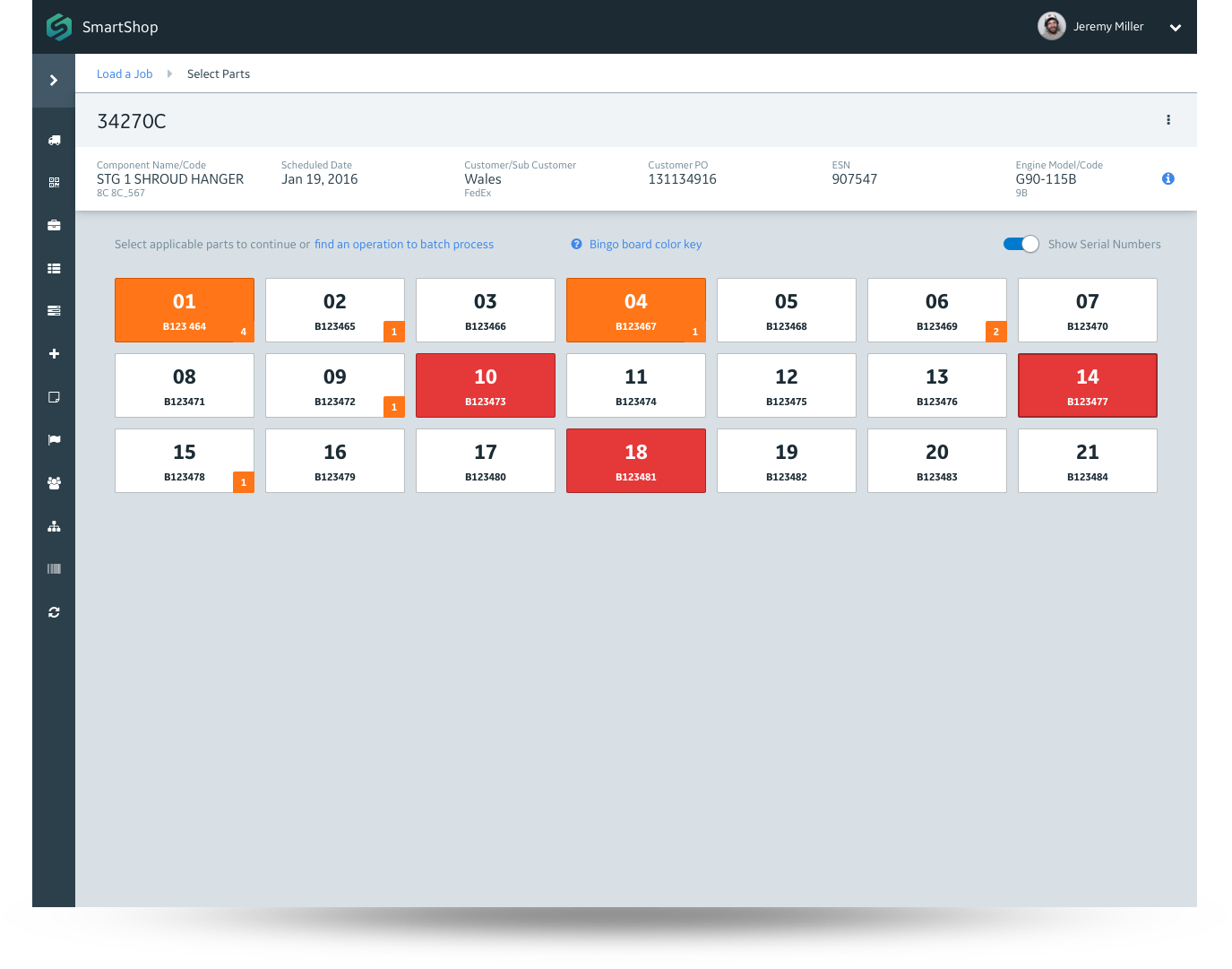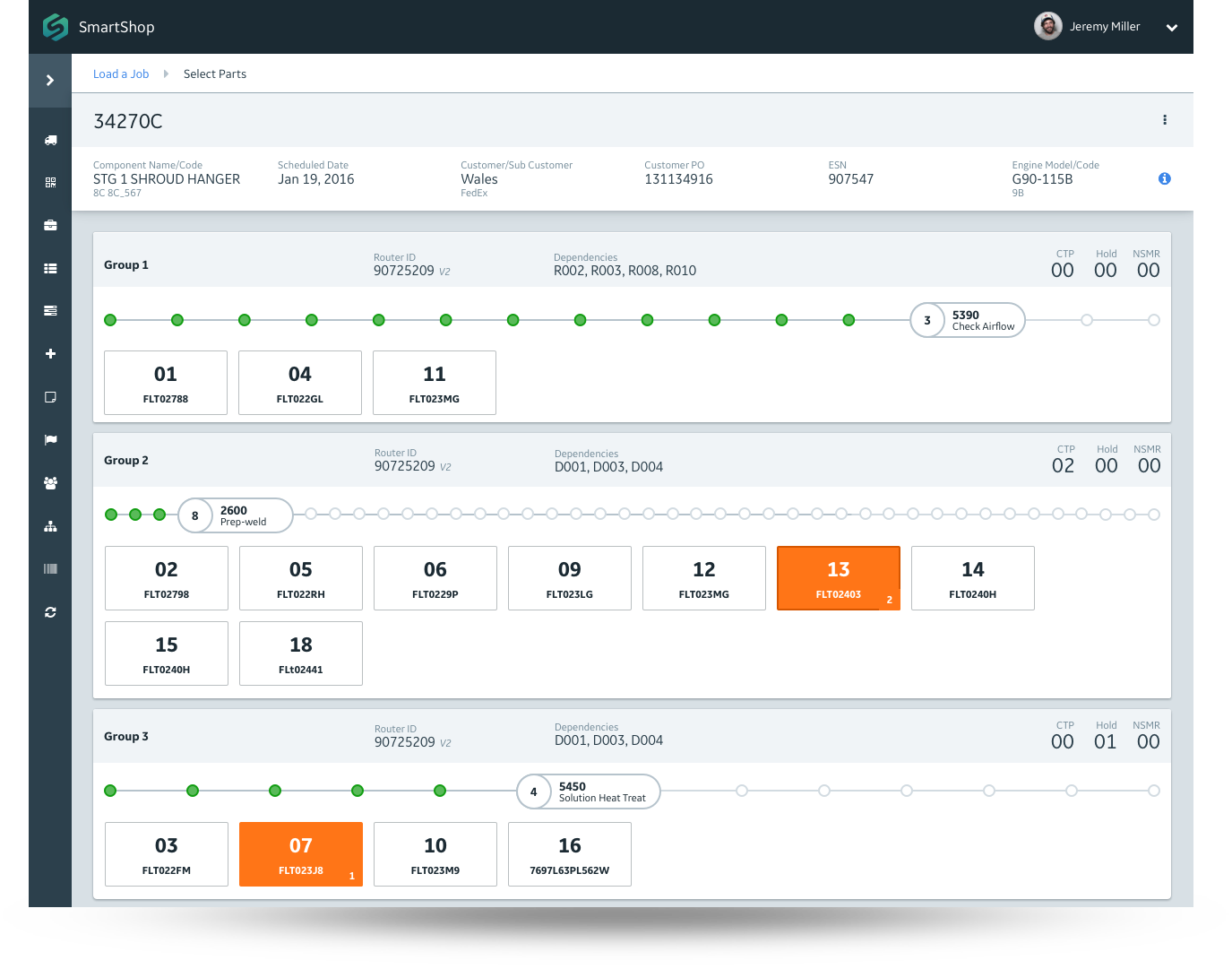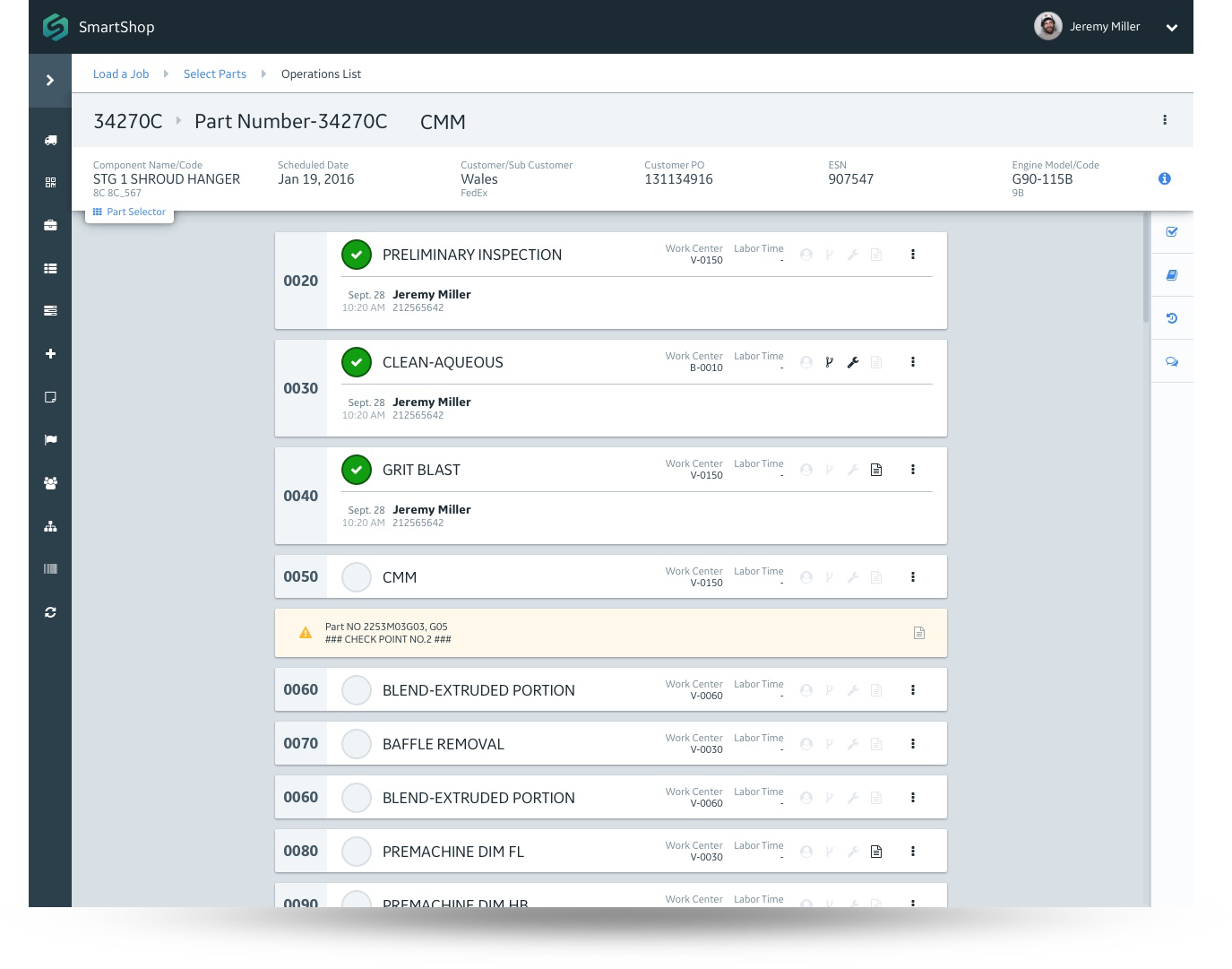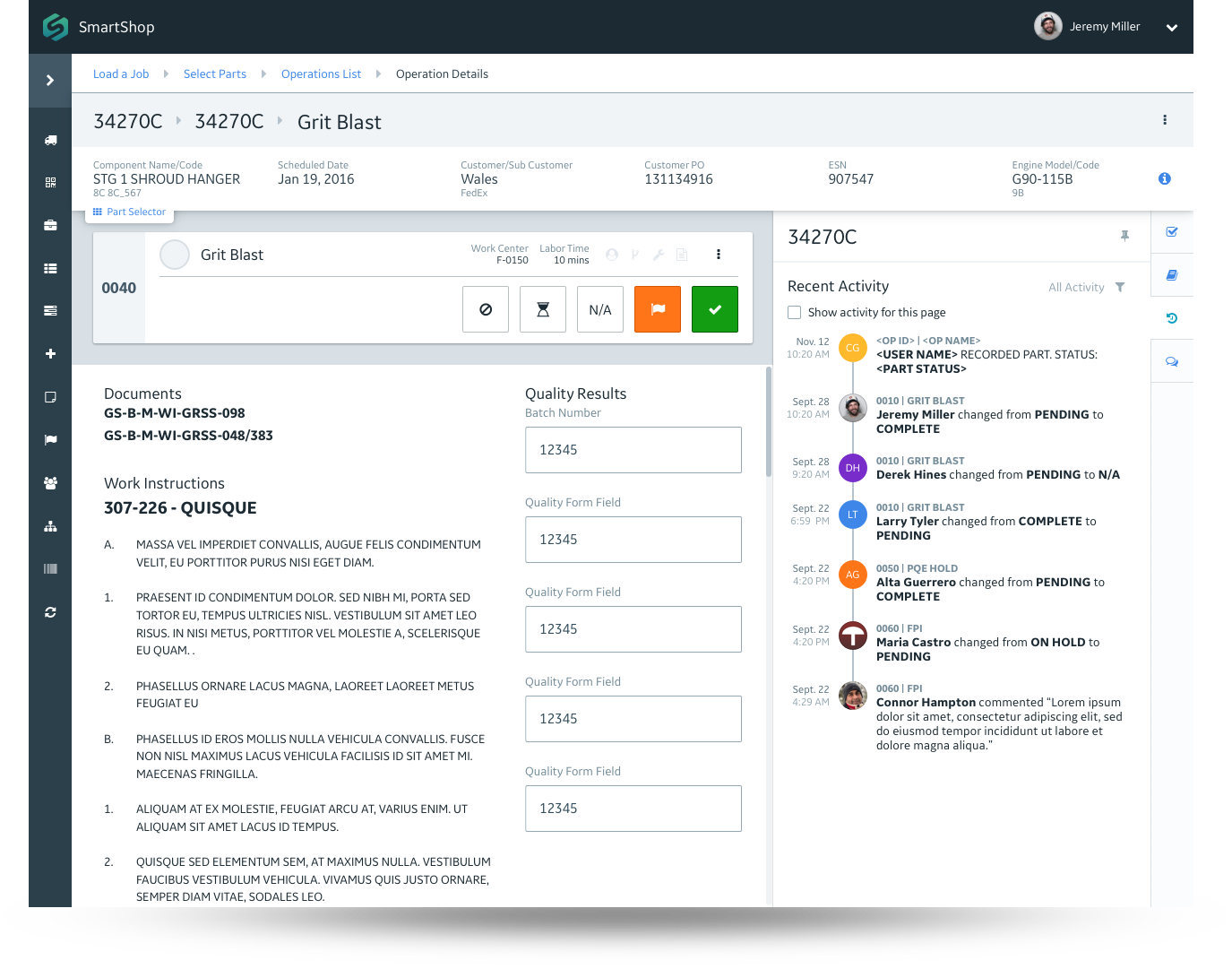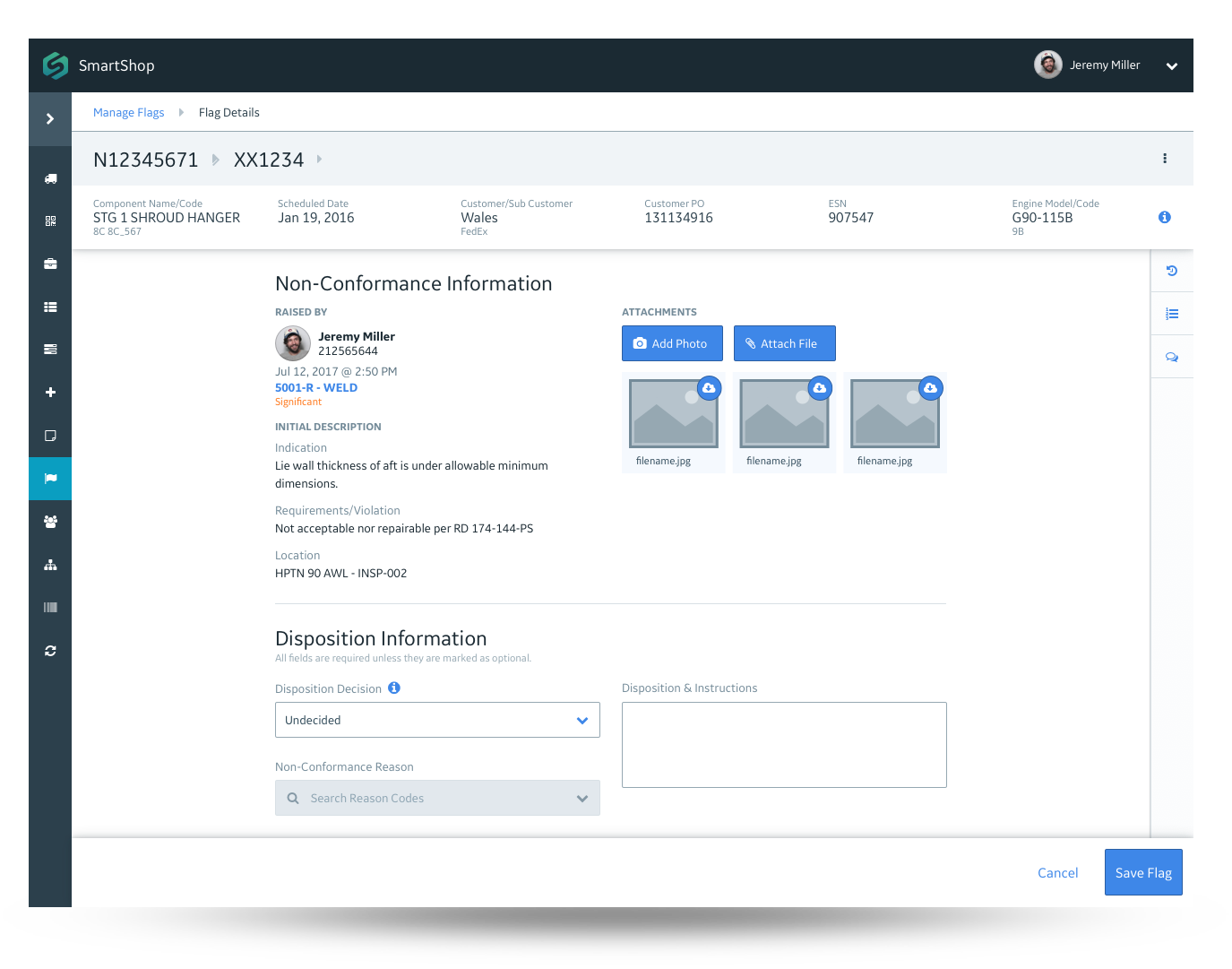

Smartshop is an enterprise solution for maintenance, repair, overhaul (MRO) service shops that automates and orchestrates shop floor operations like inspections, work scope determination, repair, assembly, quality assurance, and reporting.
My Role
UX Design Lead
Collaborators
Product Managers
Engineering Teams
UX Designers
Users
Skills Used
Design Leadership
Ethnographic Research
Listening
Problem Solving
Whiteboarding
Wireframing
Prototyping
Usability Studies
Duration
Multiple Years
Abstract
GE Aviation’s Maintenance, Repair, and Overhaul (MRO) facilities are still using paper to track shop orders as they progress through a complex flow from start to finish.
The SmartShop UX team asked ourselves “How might we organize and display information in a way that streamlines a complex process in digital format?”
The Problem
A gas turbine and a jet engine are remarkably similar machines. In fact, GE Power was tasked by the US government during WWII to build America’s first jet engine. The partnership evolved into what is now GE Aviation. A jet engine and gas turbine operate under similar mechanical principles. They have similar designs and similar components. Ultimately, the process of repairing these machines are very similar.
Because GE Aviation and GE Power’s components are so similar, the component repair process is remarkably similar as well. This allowed the two business units to share the same software for component repair.
Like any modern-day industrial conglomerate, government regulation is a reality that looms large over any process change. Because of that, the service shops are stuck using legacy mainframe software and paper. Lots of paper. Tons of paper.
The biggest challenge we faced was that most of the shops in the component repair network were built up over the last several decades via external acquisitions. When GE acquired these businesses they generally left their legacy processes in place. There was no standard across the shops. This meant that business process varied wildly between not only component repair shops, but individual working cells too. User roles were different, vocabulary was different, paper processes were different, even the software used was different.
The Need
Because each shop has wildly different standards and processes, GE Aviation and GE Power decided they needed to try to standardize their processes across the board. The answer to this problem was to create a piece of software that both businesses would share. The SmartShop team was tasked with creating an application that was:
- Configurable to suit the various requirements of the shops in the short term.
- Built so that processes could be easily changed at the shop without a complete overhaul of the software.
- Scalable so that new component repair shops could be onboarded quickly without the need for engineering support.
The Approach
It was obvious that there was a business process overlap, so the decision was made for both GE Aviation and GE Power to share one application that would ultimately become SmartShop. This allowed us a lot of flexibility in designing a cloud-based SaSS product that was business agnostic, scalable, and flexible to suit various business processes across multiple shops and businesses.
It all starts with a conversation
The first step was to hop on a plane and travel to a component repair facility to meet end-users. We stood back and we watched them work. We observed first-hand, the pain points they faced every day.
Designing the product
One of our key takeaways from our many conversations with end-users was that SmartShop needed to be simple.
SmartShop needed to:
- Stay out of the users’ way. Our users are highly skilled laborers. They know what they needed to do to get their work done.
- Be as simple as possible with no distractions. Users are working with extremely dangerous machines. Their software tool can’t be a distraction.
- Work effectively on any number of devices. There’s no way for us to know what devices will be used across the shops.
We created a set of design principles and product goals for the teams to review before design critiques to ensure we were always aligned with our core principles.
SmartShop Product Goals
- Data Capture & Analytics
- Quality Defect Management
- Process Simplification
SmartShop Design Principles
- Keep it Simple
- Flexible and scalable
- High-Quality Software
The Outcome
GE Aviation’s McAllen Component Repair Facility
GE Power’s GEMTEC Saudi Arabia Component Repair Facility
My Journey
If there is one constant at a giant corporation it’s that there will be change. Throughout my time on SmartShop, I’ve changed businesses three times. I’ve had ten different supervisors. But from the beginning, the one thing that has stayed consistent on the SmartShop UX team is me.
My Contributions
- Lead a multidisciplinary team of four UX designers across the US and Europe to support four teams of developers
- Create all branded material including the identity mark, posters, banners, and internal marketing material
- Establish and lead the execution of the UX strategy, including planning & executing research efforts, design workshops, and coordinating UX resources to effectively execute on the plan
- Coordinate and lead all research efforts at GE service shops globally, including on-site ethnographic research studies, user interviews, and usability studies
- Help to define the product vision by working closely with stakeholders to establish feature roadmap and priorities
- Help dev teams to quickly implement user stories by developing and maintaining the SmartShop UI design system. This includes Sketch libraries, all design system docs, and maintaining the SmartShop UI living style guide using Storybook
- Establish consistent functionality and interactions by facilitating design critiques with the SmartShop UX team members responsible for individual dev teams
- Coordinate UX resources to support the dev teams on a two-week sprint schedule
- Deliver user insights to the dev team by presenting and recording the “ShopTalk” series, which dives into business practices and learnings from user research
